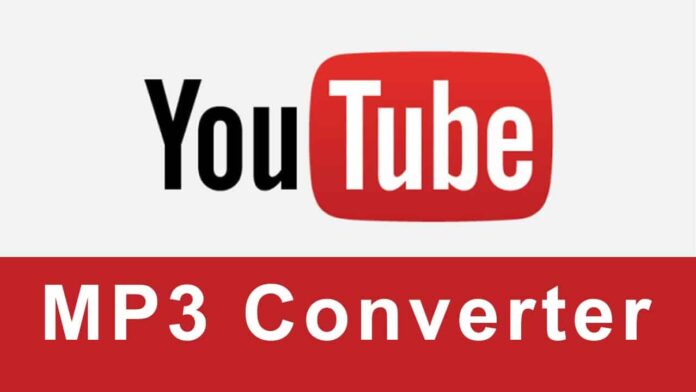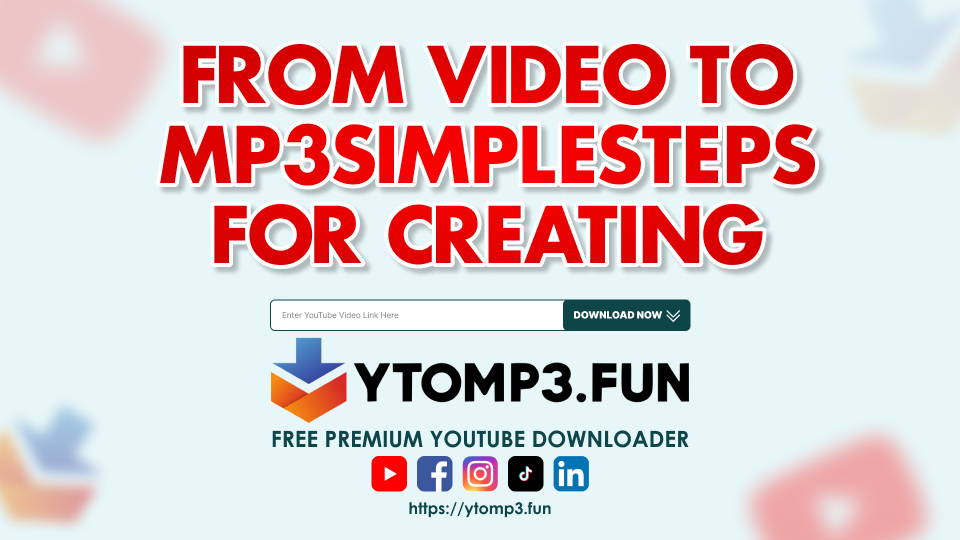From Video to MP3: Simple Steps for Creating Offline Study Playlists from YouTube
Offline Study Playlists from YouTube
Studying with the correct resources can significantly increase productivity. For students and learners who find educational videos useful, YouTube to MP3 Convert files allows for offline access and simple playlist management. Whether it’s lectures, podcasts, or audiobooks, having an offline study playlist allows you to learn from anywhere without the need for the internet. This post will show you how to create a high-quality study playlist by converting YouTube videos to MP3.
Why Convert YouTube Videos to MP3s for Studying?
Here are some of the major advantages of converting YouTube videos into MP3 files.
- Listen Anywhere: Once downloaded, MP3 files can be accessible offline, allowing you to study on the road, when traveling, or in areas without Wi-Fi.
- Reduce Distractions: Audio files allow you to focus on the content without being distracted by sights.
Audio files are smaller than videos and hence take up less space on your device.
“Having an offline study playlist allows you to take your learning anywhere and tailor your listening experience to fit your schedule.”

Step-by-Step Guide for Converting YouTube Videos to MP3
To create your unique study playlist in MP3 format, follow these instructions.
Step 1: Find and Select Study Content
Begin by identifying YouTube videos that are relevant to your learning goals. Look for educational channels, podcasts, or even interviews related to your topic. Many educational channels offer information suitable for audio-only listening, such as:
- TED Talks: Inspirational Ideas and Critical Thinking
- Khan Academy covers academic topics.
- Crash Course for detailed explanations across several subjects.
- YouTube podcasts with thought-provoking topics.
Step 2: Select a Reliable YouTube to MP3 Converter.
Choosing a reliable converter offers high-quality music without annoying advertisements or security issues. Here are some popular choices:
- YTMP3.cc: Simple, no installation required, and ideal for rapid conversions.
- 4K YouTube to MP3: Supports batch downloads and numerous file formats.
- Any Video Converter (AVC) is well-known for its superb audio quality and compatibility with a wide range of formats.
Step three: Copy and paste the video URL.
- Once you’ve decided on a converter, follow these steps:
- Open the YouTube video that you want to convert.
- Copy the video URL from the address bar.
- Open the converter tool and paste the URL into the appropriate field.
Step 4: Select MP3 as the output format.
To ensure compatibility with most devices, pick MP3 as the output format in the converter’s settings. If your converter provides a quality option, select a higher bit rate (such as 320kbps) for crisper sound, especially if the video contains high-quality audio.
Step 5: Download and Organize your files.
When the conversion is finished, download the MP3 files and save them to a designated place. To make it easier to find what you need, organize your files into folders by subject, theme, or course. If you’re downloading many videos, converters like 4K YouTube to MP3 let you download full playlists at once, saving you a lot of time.
Tips to Organize Your Offline Study Playlist
A well-organized study playlist can help you identify important subjects faster and streamline your learning process. Here is how to start:
- Divide your MP3 tracks into folders based on subject or theme (for example, “Science,” “History,” or “Productivity”).
- choose Playlists for Long Sessions: For uninterrupted study sessions, choose a media player that allows you to construct playlists from your MP3 files, such as VLC or Windows Media Player.
- Label Your Files Clearly: Rename your files to reflect their substance, making it easier to identify themes without having to listen first.
Legal Considerations for YouTube to MP3 Conversions
When downloading videos from YouTube, it is critical to follow copyright guidelines. Many educational channels on YouTube enable downloads or offer video with Creative Commons licenses, so seek for these when developing your collection.
- Personal Use Only: Converted information should be utilized for personal study purposes and not redistributed.
- Creative Commons and Open Educational Resources (OER): Use films from sites that allow free downloads and personal use.
“Make sure to check the copyright permissions for each video to ensure you’re respecting the creator’s rights while building your study playlist.”

Best Ways to Use Your Study Playlist Effectively
Now that your playlist is ready, here are some techniques to make the most of it:
- Use Listening Time Strategically: Listen to lighter information during breaks and store in-depth stuff for when you’re ready to focus.
- Adjust Playback Speed: Some media players allow you to accelerate audio, which is useful for stuff you’re already familiar with.
- Take Notes While Listening: Even if you’re on the road, jot down important points or questions to explore later.
Making a study playlist allows you to establish a flexible learning schedule that fits your lifestyle. With MP3 material on your device, you’ll have access to a plethora of information without the need for an internet connection.
Recommended Converters for High-Quality Audio
To ensure the optimum listening experience, here’s a quick selection of high-quality audio converters for instructional content:
- 4K YouTube to MP3 is known for its outstanding quality and ease of use.
- YTMP3.cc: Ideal for rapid downloads with no complicated setup.
- Clip Grab is a trustworthy option that supports high-quality MP3 files.
Each of these programs has unique capabilities to meet your requirements, so try a few to determine which one works best for you.

Wrapping up: Enjoying an Offline Study Playlist
Making an offline study playlist with YouTube to MP3 converters is a great method to broaden your learning opportunities and make studying easier. With the correct tools and content arrangement, your offline playlist may become a valuable resource for information and personal growth that is accessible whenever you need it.
Converting educational films to MP3 enables you to take control of your learning routine, creating a knowledge foundation that is adaptable, portable, and suited to your specific needs.



3 Comments